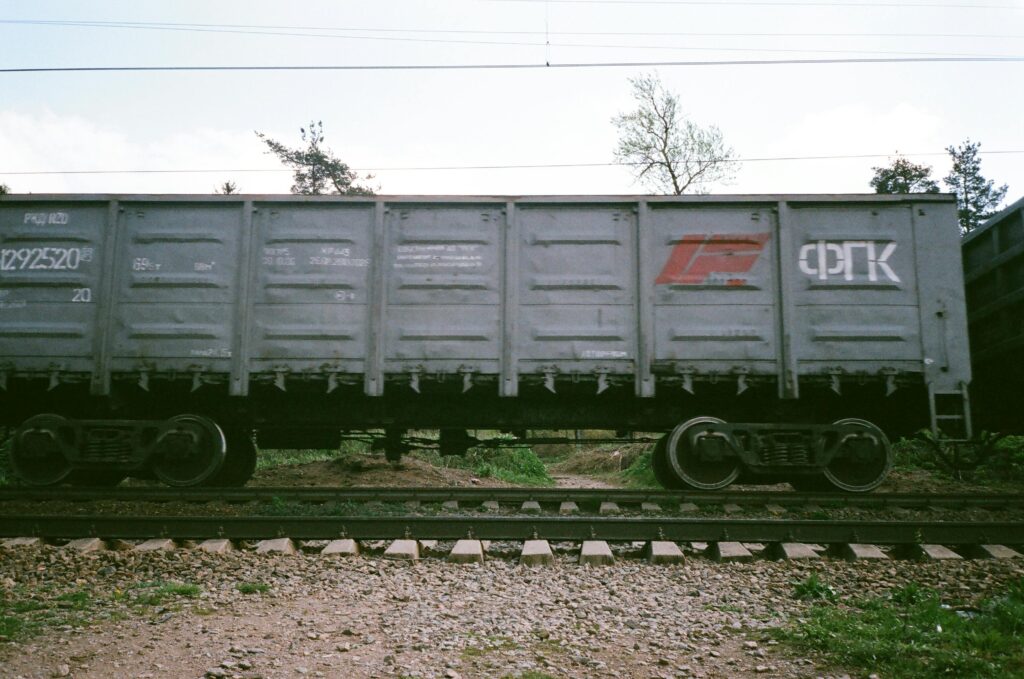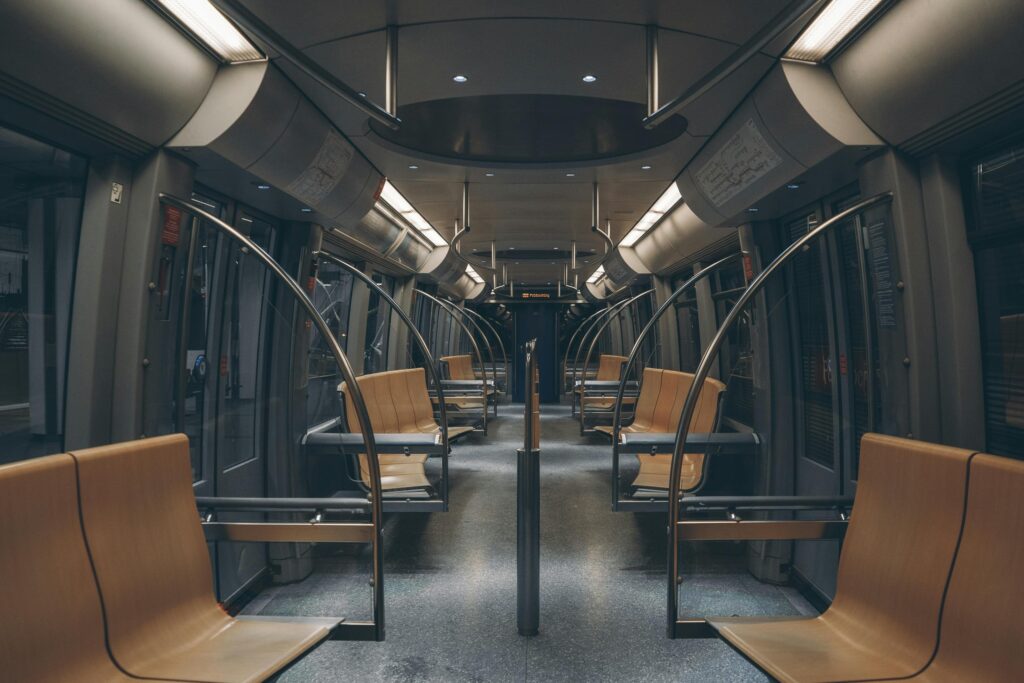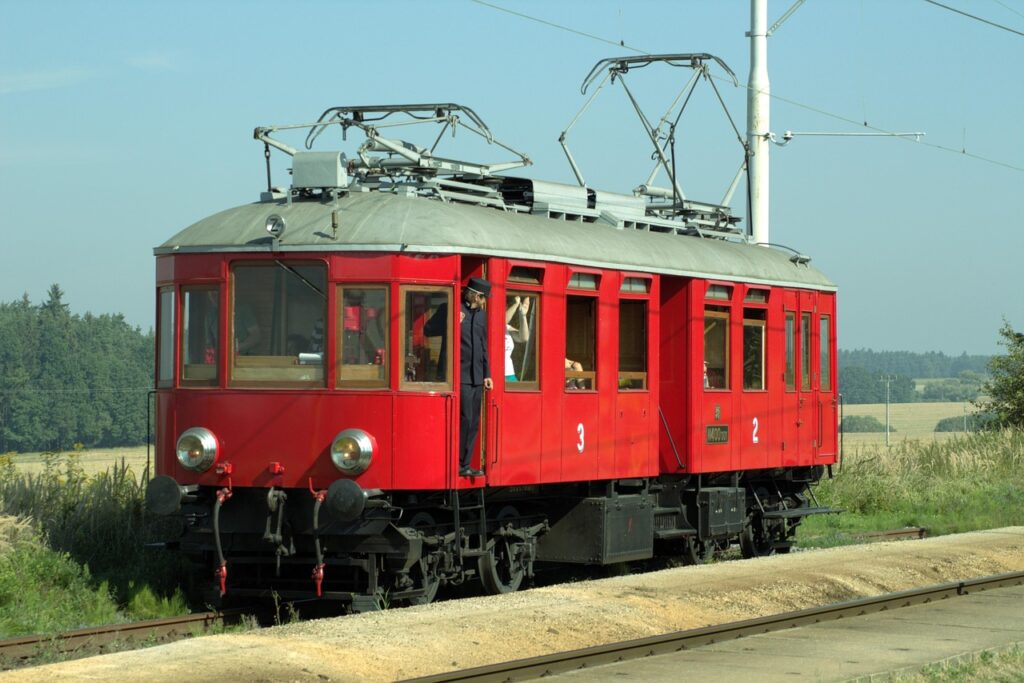5901 Botham Jean Blvd, Dallas, TX 75215
How to Recycle Railcars: A Quick Guide
April 24, 2025Railcar recycling follows a methodical process that maximizes material recovery while minimizing environmental impact. Each stage plays a role in transforming end-of-life rail vehicles into valuable resources.
Recycling Railcars: Exploring the Stages

Decommissioning Decision
The recycling journey begins when a railcar reaches the end of its operational life, typically after 30-40 years. The decision to retire a railcar often results from repeated malfunctions, high maintenance costs, or technological obsolescence.
Rail carriers follow specific procedures when decommissioning rolling stock, including thorough inspections, formal documentation, and proper transfer to authorized recycling facilities. Once decommissioned, the railcar is officially considered waste and enters the recycling stream.
Pre-Treatment Phase
Safety is paramount in railcar recycling. The pre-treatment phase involves moving the vehicle to a controlled environment where potentially harmful substances are safely removed, preventing environmental contamination and protecting worker health.
During pre-treatment, technicians drain all operating fluids, including oils, brake fluids, and antifreeze, which require special handling and containment. Workers also remove batteries, fire extinguishers, gases, explosives, braking sand, greases, and catalytic capacitors for specialized recycling or disposal.
Dismantling Process
The dismantling phase focuses on recovering valuable components before shredding. Workers carefully remove parts that can be reused directly or refurbished, such as bogies, wheel sets, couplings, buffers, springs, control valves, and brake systems.
Beyond reusable components, dismantlers separate materials for recycling, including seats, windows, wire harnesses, electronic parts, flooring, and HVAC units. The effectiveness of this stage depends on accessibility, connection types, and dismantling time. Materials are sorted by type to maximize recovery value.
Shredding Operations
After dismantling, the remaining railcar structure enters industrial shredders. The railcar is often compacted first to reduce transportation volume and costs. Shredders then grind the material into small pieces for easier separation and processing.
The shredding process creates distinct material streams. Magnetic separation extracts ferrous metals like steel and iron, while eddy current separators recover non-ferrous metals such as aluminum and copper. The remaining mix of materials forms what is known as shredder light fraction (SLF).
Material Sorting and Final Processing
The final stage involves sorting and processing the recovered materials. Ferrous and non-ferrous metals are sent to specialized recycling facilities, typically achieving recycling rates of 90-98%, making them the most valuable components.
The shredder light fraction contains plastics, rubber, foam, residual metal pieces, fabric, glass, and other materials. Advanced sorting technologies can recover additional materials from this fraction. Any remaining waste that cannot be recycled or recovered for energy is properly disposed of according to environmental regulations.
Modern railcar recycling can achieve recovery rates of 90-95% or higher. The metals recovered from railcars often return to use in new products, including new rail vehicles, completing the circular economy loop.
| Material Type | Recovery Rate | Recovery Method |
|---|---|---|
| Ferrous Metals – Steel | 90-98% | Shredding and remelting |
| Ferrous Metals – Cast Iron | 80-90% | Shredding and remelting |
| Non-Ferrous Metals – Aluminum | 80-95% | Dismantling, mechanical separation and remelting |
| Non-Ferrous Metals – Copper, Zinc | 60-80% | Dismantling, mechanical separation and remelting |
| Polymers (excluding Elastomers) | 50-70% | Dismantling, separation and dedicated recycling processes |
| Elastomers | 50-70% | Dedicated recycling processes |
| Glass | 50-100% | Remelting |
| Electronic and Electrical Components | 60-85% | Sorting and dedicated recycling processes |
What Materials Can Be Recycled from Railcars?
Railcars are valuable sources of recyclable materials at the end of their operational life. Their composition offers significant potential for material recovery and reuse in various industries.
Ferrous Metals
Ferrous metals make up the largest portion of recyclable materials from railcars. Steel and cast iron constitute about 60-80% of a cargo railcar’s total mass. These materials are especially valuable due to their magnetic properties, which facilitate easy separation during processing.
The recycling rate for ferrous metals is impressively high, typically reaching 90-98%. When recycled, these metals can be remelted and formed into new steel products without losing their inherent properties, making them ideal for closed-loop recycling systems.
Steel recovered from railcars often becomes construction materials, machinery components, and even new transportation equipment. This has substantial environmental benefits, as producing steel from recycled material requires significantly less energy than manufacturing it from raw iron ore.
Non-Ferrous Metals
Non-ferrous metals are another valuable category of recyclable materials in railcars, including aluminum, copper, zinc, and lead. Though present in smaller quantities than ferrous metals, these materials often have higher value per weight unit in recycling markets.
Aluminum components, commonly used in passenger railcar bodies and interiors, typically achieve recycling rates between 80-95%. Copper, found in wiring, electrical systems, and motors, can be recovered at rates of 60-80%. Lead, primarily from batteries, reaches recovery rates of 80-98%.
Recycling non-ferrous metals is particularly important for sustainability. For instance, recycling aluminum uses only about 5% of the energy needed to produce new aluminum from bauxite ore.
Polymers and Elastomers
Modern railcars contain various plastic and rubber components that can be recycled. Polymers (excluding elastomers) are found in interior paneling, seating, instrument panels, and other applications throughout the vehicle.
Recovery rates for these materials typically range from 50-70%. The recycling process involves dismantling, separation, and dedicated recycling procedures or incineration with energy recovery.
Elastomers, primarily rubber components used in seals, gaskets, and vibration dampeners, have similar recovery rates of 50-70%. They can be processed through specialized recycling methods or shredder light fraction recycling.
The challenge with polymers and elastomers lies in the variety of types used, each requiring different recycling approaches. Additionally, composite materials that combine polymers with other substances can complicate the recovery process.
Glass and Electronic Components
Railcar windows and other glass components can be recycled at rates ranging from 50-100%, depending on the type. Safety glass typically achieves recycling rates of 50-94% through separation and remelting processes.
Electronic and electrical components, increasingly common in modern railcars, represent a growing category of recyclable materials. These components can achieve recycling rates of 60-85% through sorting and specialized recycling processes.
The recovery of valuable metals like gold, silver, and rare earth elements from electronic systems makes this recycling stream particularly valuable despite the complex separation procedures required.
| Type of Material | Recovery Rate for Calculation | Recovery Rate from Network | Recovery Method |
|---|---|---|---|
| Ferrous metals – Steel | 98% | 90–98% | Shredding and remelting |
| Ferrous metals – Cast iron | 98% | 80–90% | Shredding and remelting |
| Non-ferrous metals – Pb | 98% | 80–98% | Dismantling, mechanical separation and remelting |
| Non-ferrous metals – Al | 98% | 80–95% | Dismantling, mechanical separation and remelting |
| Non-ferrous metals – Cu, Zn | 98% | 60–80% | Dismantling, mechanical separation and remelting |
| Polymers (excluding elastomers) | 100% | 50–70% | Dismantling, separation and dedicated recycling processes |
| Elastomers | 100% | 50–70% | Dedicated recycling processes |
| Glass | 100% | 50–100% | Remelting |
| Safety glass | 94% | 50–94% | Separation and remelting |
| Oils | 100% | 50–100% | Refining |
| Other fluids | 83% | 50–80% | Dedicated recycling processes |
| Modified organic natural materials | 100% | 50–70% | Shredder light fraction recycling |
| Carbon reinforced polymers | 80% | 50–70% | Dedicated recycling processes |
| Electronic and electric | 98% | 60–85% | Sorting and dedicated recycling processes |
Modified Organic Materials and Others
Modified organic natural materials like leather, wood, cardboard, and cotton are also present in railcars, particularly in passenger vehicles. These materials can achieve recovery rates of 50-70% through various recycling methods.
Other recyclables include fluids such as oils and lubricants, which can be refined or incinerated with recovery rates between 50-100%. Operating fluids must be carefully removed during the initial stages of railcar recycling to prevent environmental contamination.
Carbon-reinforced polymers, increasingly used in modern lightweight railcar designs, present unique recycling challenges. Current technologies allow for recovery rates of 50-70%, though specialized processes are required.
What Are the Challenges in Railcar Recycling?

Regulatory Gaps and Inconsistent Practices
The railcar recycling industry lacks specific EU-level legislation for rolling stock, leading to inconsistent recycling practices across regions. Different countries follow varying standards and procedures for processing end-of-life railcars.
Without harmonized regulations, recycling facilities must navigate a complex patchwork of local requirements, creating uncertainty for operators and discouraging investment in specialized railcar recycling infrastructure.
Standardization efforts could transform this challenge into an opportunity for improvement. A unified regulatory framework would establish clear guidelines and potentially incentivize more efficient recycling operations across borders.
Modern Composite Materials
Traditional steel railcars present fewer recycling barriers. However, newer designs incorporate advanced composite materials like carbon fiber reinforced polymers, complicating the recycling process.
These materials offer benefits during use, such as lighter weight and improved fuel efficiency, but create end-of-life challenges because they cannot be recycled using conventional methods.
Composite materials often require specialized separation techniques and processing equipment. Current recycling methods for carbon fiber composites are energy-intensive and costly, making their recycling economically unfavorable.
The industry must develop more cost-effective technologies for processing these advanced materials. Investment in research could yield innovations that make composite recycling financially viable.
Cost-Intensive Dismantling Process
Railcar recycling involves intricate dismantling procedures requiring significant labor and specialized equipment. Each railcar contains numerous components that must be carefully separated before processing.
The dismantling process demands skilled workers who understand railcar architecture and can safely remove parts containing hazardous materials, adding to the overall cost of recycling operations.
Time requirements for complete railcar dismantling further impact economic feasibility. Current manual processes limit throughput capacity and increase operational expenses.
Automation technologies could reduce these costs. Robotic systems designed for railcar dismantling could enhance efficiency and improve the economic outlook for recyclers.
Shredder Residue Management Challenges
After valuable metals are recovered from railcars, processors face the challenge of managing shredder residue, which consists of non-metallic components like plastics, rubber, and glass.
Treatment capabilities for shredder residue vary dramatically between regions. Some countries have advanced facilities for energy recovery or further material separation, while others lack the necessary infrastructure.
The inconsistent availability of proper treatment facilities results in significant portions of shredder residue being landfilled, undermining the environmental benefits of railcar recycling programs.
| Region | Approach | Benefits | Challenges |
| Europe | Advanced technology | Precision and sustainability | High costs |
| America | Automated solutions | High-speed processing | Investment required |
| Asia | High-volume processing | Economic benefits | Risk of lower quality |
Creating dedicated processing centers for shredder residue represents an opportunity for the industry. Enhanced sorting technologies could increase material recovery rates and decrease landfill volumes.
Economic Barriers to Complete Recycling
The economics of railcar recycling present perhaps the greatest overall challenge. Recycling operations must generate sufficient revenue to justify substantial investments in equipment, facilities, and labor.
Current market conditions favor the recovery of valuable metals while providing little incentive for processing less valuable materials. This often results in incomplete recycling where only the most profitable components are processed.
Fluctuating commodity prices introduce additional uncertainty into the recycling marketplace, affecting profitability and discouraging long-term investments in advanced processing technologies.
Extended producer responsibility programs could address these economic barriers by distributing recycling costs more equitably throughout the supply chain, creating more stable financial conditions for recycling operations.
How Are Manufacturers Improving Railcar Recyclability?

Modern railcar manufacturers have made significant strides in enhancing the recyclability of their products. Companies like Alstom, Bombardier, and Siemens now design railcars with recovery rates between 95-98%, a substantial improvement over earlier generations.
Material selection plays a crucial role in this evolution. Manufacturers increasingly opt for recyclable materials with established recovery processes. Aluminum and steel are industry favorites due to their durability and near-complete recyclability, forming the structural backbone of most modern railcars and contributing significantly to high recovery rates.
Design for Disassembly
Innovative design approaches focus on facilitating easy dismantling at the end of a railcar’s service life. This includes using standardized components, reducing material variety, and minimizing permanent bonds between different material types. Manufacturers now design junction points for straightforward separation during recycling.
Proper material marking has become standard practice across the industry. Components receive clear identification labels indicating their composition, streamlining the sorting process during recycling. This simple yet effective approach significantly improves recovery rates by reducing contamination in material streams.
Breaking New Ground in Sustainable Materials
Some manufacturers aim for 100% recovery rates, systematically minimizing or eliminating hazardous substances from railcar components. Harmful chemicals and materials that hindered past recycling efforts are being phased out in favor of environmentally compatible alternatives.
The integration of circular economy principles extends beyond material selection. Companies like Greenbrier have pioneered sustainable solutions such as their Multi-Max Plus™ design, which features streamlined aerodynamics that reduce environmental impact while using materials selected for end-of-life recyclability.
US Steel, Norfolk Southern, and Greenbrier collaborated to develop a more sustainable steel gondola railcar. This initiative demonstrates how material suppliers and manufacturers can work together to improve performance and recyclability through innovative material applications.
Lightweight Materials and Their Impact
The adoption of lightweight materials presents both opportunities and challenges for recyclability. While reducing weight improves operational efficiency, some composite materials can be more difficult to recycle. Manufacturers address this by balancing weight reduction benefits against end-of-life considerations.
Research indicates that even with the introduction of innovative materials and manufacturing technologies, the reduction in recyclability rates remains minimal—about 2% for recyclability and 0.2% for recoverability. This shows that manufacturers have successfully integrated new materials while preserving recycling potential.
Smart dismantling strategies complement these material choices. By designing components with eventual separation in mind, manufacturers ensure that different materials can be effectively recovered and directed to appropriate recycling streams. This includes considerations like using removable fasteners rather than permanent adhesives wherever possible.
Conclusion: Partnering for a Greener Future
Railcar recycling is more than a technical process—it’s a vital step toward environmental responsibility and resource efficiency. As we’ve seen, every stage of the recycling journey plays a crucial role in reducing landfill waste, recovering valuable materials, and supporting a circular economy. However, success depends not only on the complexity of the recycling operation but also on the reliability of your recycling partner.
That’s where Okon Recycling comes in. With experience, expertise, and a commitment to sustainability, Okon helps ensure that your decommissioned railcars are processed responsibly and profitably. Whether you’re a manufacturer, transit authority, or rail operator, Okon can guide you through the entire recycling lifecycle with precision and care.
Ready to recycle responsibly? Contact Okon Recycling today at 214-717-4083 to discuss your railcar recycling needs.
